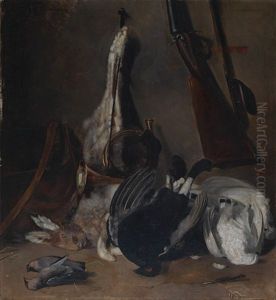Ragnhild Beichmann Paintings
Ragnhild Beichmann was a Norwegian painter, born in 1865 in Kristiania (now Oslo), Norway. She emerged as an artist during a period when women were beginning to make significant inroads into the art world, a domain traditionally dominated by men. Despite the societal challenges of her time, Beichmann pursued her passion for art and developed a distinctive style that contributed to her recognition in the Norwegian art scene.
Beichmann's education in art began in her native Norway, but she, like many artists of her era, traveled to further her studies. She spent significant time in Paris, which was the epicenter of the art world at the turn of the 20th century. There, she was exposed to various movements and styles, including Impressionism, which influenced her work. Beichmann's art is characterized by its vibrant colors, light treatment, and the often simple, yet profound subjects she chose to depict. Her works include landscapes, portraits, and still lifes, each revealing her keen observation and ability to capture the essence of her subject matter.
Throughout her career, Ragnhild Beichmann participated in numerous exhibitions, both in Norway and abroad. Her contributions to Norwegian art were recognized and appreciated by her contemporaries. However, as is the case with many female artists of her time, her work did not always receive the same level of attention and acclaim as that of her male counterparts. Despite this, Beichmann's paintings have earned her a respected place in Norwegian art history.
Beichmann's legacy is that of a pioneering woman artist who navigated the challenges of her era with determination and grace. Her work continues to be celebrated for its beauty and sensitivity, offering insights into the life and times of early 20th-century Norway. Ragnhild Beichmann passed away in 1942, leaving behind a body of work that continues to inspire and captivate art lovers and historians alike. Her contributions have been revisited in recent years, garnering her posthumous recognition and ensuring her rightful place in the annals of art history.

